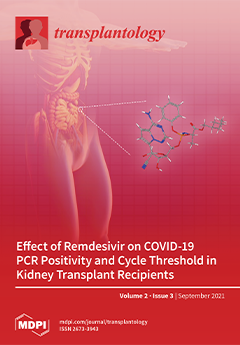Open AccessFeature PaperReview
Mental Health and Well-Being of Solid Organ Transplant Donors. The Forgotten Sacrifices
by
Xin-Hui Pan, Jonathan Zhi Kai Toh, Cheng Han Ng, Phoebe Wen Lin Tay, Neng Wei Wong, Alfred Wei Chieh Kow, Anantharaman Vathsala, Eunice Xiang-Xuan Tan, Mark Dhinesh Muthiah and Wen Hui Lim
Cited by 3 | Viewed by 15887
Abstract
In light of a global organ shortage, living donor transplantation has become increasingly relevant as an alternative to deceased donor transplantation. While current research has revolved around the medical aspects of transplantation, there remains a paucity of literature regarding the quality of life
[...] Read more.
In light of a global organ shortage, living donor transplantation has become increasingly relevant as an alternative to deceased donor transplantation. While current research has revolved around the medical aspects of transplantation, there remains a paucity of literature regarding the quality of life (QOL) of living donors. Hence, this review aims to provide a comprehensive outline of the current landscape of living liver and kidney transplantation, with a focus on the mental health and wellbeing of donors. As highlighted in previous studies, organ donation has a significant impact on both physical and mental aspects of donor wellbeing, with marked deteriorations occurring in the short term. Furthermore, other qualitative aspects such as financial burden contribute greatly to donor distress, reflecting a need for improved donor care. To address these pertinent issues, recommendations for a successful transplant program are detailed in this review, which encompasses psychological and social aspects of donor care throughout the donation process. Further research can be done on the impact of recipient deaths on donor QOL and appropriate interventions. Overall, given the selfless sacrifices of living donors, the care of their mental wellbeing is essential. Therefore, greater emphasis should be placed on the provision of adequate psychosocial support for them.
Full article
►▼
Show Figures




